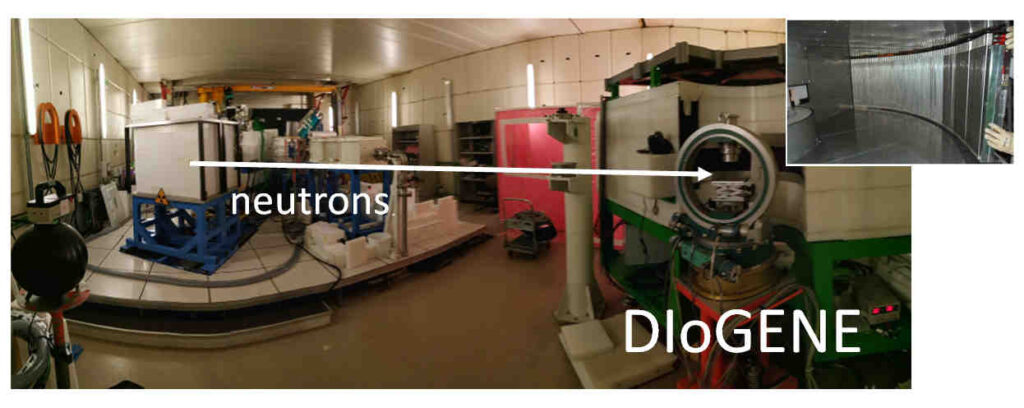Jacques Darpentigny and Frédéric Ott
IRAMIS/Laboratoire Léon Brillouin, CEA-CNRS, Univ. Paris-Saclay, 91191 Gif sur Yvette France.
E-mails: Jacques.Darpentigny@cea.fr, Frederic.Ott@cea.fr
Within Europe, the association ELENA [1] was recently created to promote the investigation of the capabilities of new types of neutron sources using low energy proton accelerators to build HiCANS type sources, namely High Current Accelerator-driven Neutron sources. Such sources have been identified by the LENS [2] as a potential solution to mitigate the foreseen neutron drought in the decade beyond 2030 [3].
The CEA started in 2017 an experimental program to develop the technologies necessary to the construction of HiCANS sources, such as high current proton accelerators, targets, moderators and the associated neutron instrumentation. The IPHI accelerator at Saclay was used as the nucleus of the IPHI – Neutron platform. The main goals were to demonstrate the operation of a beryllium target at high power (~50kW) and evaluate the performances of a neutron Time-of-Flight instrument around a low energy accelerator-driven source. While the IPHI accelerator has a limited energy (Eproton = 3MeV), it nevertheless allows testing key components. This expertise will be necessary if France engages in the construction of the ICONE HiCANS source [4] to provide French users with renewed neutron scattering capacity in the next decade. The operation of a beryllium target operating at a power of 30 kW was demonstrated last year [5]. In parallel, a “generic neutron scattering instrument”, DIoGENE was built around IPHI. Its aims are to investigate the performances of neutron moderators, learn about operating in time-of-flight mode and get quantitative data about background noise issues around HiCANS. The photo below shows the DIoGENE diffractometer in the IPHI casemate.

Figure 1. The IPHI casemate with the Target-Moderator-Reflector assembly (TMR), the Direct Beam dump and the DIoGENE instrument.
During a recent operation of the source, it was possible to observe on DIoGENE the diffraction of an austenite steel rod when operating the machine in pulsed mode at a power of 200 watts.
Due to the low power used for the measurement, the counting time was 60 minutes. This is nevertheless the first neutron diffraction measurement on a CANS source in Europe [6]. Extrapolations to a source where the proton energy is increased from 3 MeV to 25 MeV (ICONE design) suggest that the performances of the DIoGENE instrument would be on par with the late high flux powder diffraction instrument G41 at Orphée [7].

Figure 2. (a) Debye rings over the PSD detector height measured in the time windows {2.8 – 3.2ms}. (b) Data plotted in the (Time-of-flight vs diffraction angle 2q). The diffraction peaks have been indexed as (111), (211), (222) in the austenite phase (60 minutes, 200 Watts). The background noise is still rather high.
References
[1] ELENA European Low Energy accelerator-based Neutron facilities Association
[2] LENS League of European Neutron Source
[3] Neutron Science in Europe (LENS, 2022)
[4] ICONE, an accelerator-driven neutron source
[5] Long term operation of a 30 kW Beryllium target at IPHI.
J. Schwindling et al, Journal of Neutron Research 24 (2022) 289-298, 2022. DOI: 10.3233/JNR-220024
[6] Similar measurement were already performed at the RANS CANS in Japan a few years ago.
[7] Neutron scattering on DIoGENE at IPHI–neutrons.
J. Darpentigny and F. Ott, Journal of Neutron Research 24 (2022) 385–393. DOI 10.3233/JNR-220018.











